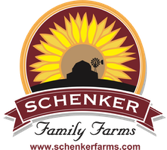What's in a Label?

What’s in a Label?
By Cheri LeBlond
KCFC Co-Coordinator
The last local harvests are coming in, the farmers markets are ending and those of us not clever with a canning jar will be supplementing organic produce from the grocery store this winter.
So how will you navigate all the "organic" and "natural" labels in the grocery aisles?
In an effort to protect consumers, the federal government regulates who can use the word "organic" on their products based on the Organic Food Protection Act of 1990. The USDA requires the following standards before a product can claim it is "organic" or "natural."
"USDA Organic"
Raw, fresh products or processed products with the USDA Organic seal must be certified by the USDA’s National Organic Program or its agents to be at least 95 percent organic. Food that is 100 percent organic also may carry the seal. Because the seal is optional, not all producers display it even if they meet the standard.
"100% Organic"
Labels containing these words must contain 100 percent organically produced ingredients, not counting added water and salt.
"Organic"
These products must contain at least 95 percent organic ingredients, not counting added water and salt. They cannot contain added sulfites, but may contain "5 percent of non-organically produced agricultural ingredients which are not commercially available in organic form."
"Made with Organic (specific ingredient inserted here)"
At least 70 percent of the specific ingredient listed in the claim, not counting water and salt, must be organic. The product cannot contain added sulfites, but may contain "5 percent of non-organically produced agricultural ingredients which are not commercially available in organic form."
"
Some Organic Ingredients"
These products may contain less than 70 percent organic ingredients, not counting added water and salt, and may
contain "5 percent of non-organically produced agricultural ingredients which are not commercially available in organic form."
"Natural"
When it comes to meat and poultry, a product can call itself "natural" if it contains "no artificial ingredient or added color and is only minimally processed (a process which does not fundamentally alter the raw product)." According to a USDA fact sheet, the label must "explain the use of the term natural (such as - no added colorings or artificial ingredients; minimally processed.)"
"Certified Naturally Grown"
Not everyone agrees with the USDA’s standards, cost or inspection practices, so other non-governmental, certification bodies have sprung up, including Certified Naturally Grown (CNG). A New York State nonprofit, CNG holds the same standards as the USDA or higher. Other area farmers inspect and test for chemicals and non-organic practices at CNG farms.
KCFC Farmer’s Pledge
Like CNG farmers, Kansas City Food Circle’s farmer members also are dedicated to organic practices that, with rare exceptions, meet the USDA’s organic standards.
By signing the KCFC pledge, farmer members promise to bring you some of the best local, organic and free-range products in the area. Some KCFC producers are certified organic by the USDA, but many can’t afford the costs of certification or the maintenance and paperwork.
***Reposted WITH PERMISSION from the Kansas City Food Circle***
Schenker Family Farms is not only Certified Naturally Grown, but Animal Welfare Certified. These are two certifications and yearly audits we are proud to say we have earned. Like many small farmers, we adhere to and are inspected for a very strict set of standards which are are in many cases more strict than the USDA Organic Standards.
~Kevin & Cherie Schenker

Comments
0 Comments